
The Luggage
Before I leave subject of Peru, my friend Jane insists that I include a list of what I packed. This is meant not only for lovers of lists, but also for those who want to know what to take for their own trip. My trip included a 4 day hike in the snow covered Andes to Machupicchu, day treks in the steamy Amazon jungle, townlife in Lima, Cuzco and La Paz, and beachlife in Miami. First, a picture of the luggage, unpacked. And below that, the luggage packed into a soft bag with wheels and shoulder strap. My "day pack" for trekking is pictured alongside. This was great for carrying my purchases back on the plane.
The List
1. Hiking Boots (Raichel, vibram soles and gortex lining £150. Worth it on the sometimes hard and sometimes wet trail, its good to get these in advance and wear them in. Most importantly, make sure they're not too small, by kicking hard against a wall when you try them on. Your toes shouldn't knock the toe caps. They also shouldn't be too big, so check your heel isn't rubbing against the back).
2. Trainers for around town (Skechers actually).
3. Rafting sandals (Tiva are the only ones for me- didn't get much use until Miami).
4. Five pairs of woolen hiking socks 3 x heavy 2 x light (Smartwool are gorgeous and thick, providing extra cushioning).
5. Three pairs trousers: 2 x chinos and 1 x Diesel jeans. I should have brought easydry kahki trek trousers instead of the second pair of chinos.
6. Rainproof, breathable jacket with hood, and 200 thickness fleece lining. (Stormlight from Field and Trek £40 for both, a big saving on brands such as Gortex, and seemed to work perfectly. The hood with wire peak is important to keep rain off your face. When its hot and wet, you need a breathable waterproof for hiking, and when its cold the removable fleece lining is great. An additional fleece with hood would also have been good for cold nights, but the padded jacket supplied by trek organisers was more than adequate.)
7. Waterproof pants too hot to wear... See 5. above.
8. Thermal underwear. Woollen is apparently best. Hardly used this, but important for very cold nights.
9. Three longsleeved shirts: Two long sleeved cotton T shirts, eg Gap. One long sleeved kahki easy dry trek shirt.
10. Two polo shirts for trek and town.
11. One pair easy dry kahki trek shorts.
12. Woolen hat with peak and covers ears.
13. One widebrimmed sun hat.
14. Pair woolen gloves.
15. Five pairs cotton boxers. M&S.
16. Surf shorts for swimming. (not used until Miami).
17. "Day pack". This is the backpack pictured above, and which I packed into the main blue bag when flying to Peru. It is a 35L Lowe Alpine Walkabout Air 35. The frame and harness made hiking comfortable. I used it when hiking, leaving the blue bag behind at base. It was accepted as hand luggage for carrying my Peru purchases when flying back to UK.
18. Toilet bag: electric toothbrush, moisturiser, etc. Most important to include in this factor 30 sunblock and Insect repellent.
19. Medical kit. "Life Systems Travel medical pack". With sterile needles, these maybe not necessary, but better safe... Most used item of this pack is band-aid and paracetamol painkiller, I also added neurophen cold and flue, clove oil for toothache, Immodium for tummy upsets, and bromide water purifier.
20. Towel. A Lifesystems easy-dry towel is most useful and less inclined to stay wet and go smelly.
21. Two 1.5L water bottles. I used collapsable plastic bottles. Good to have attachments for fixing to your backpack.
22. Thermarest inflatable mattress and fibre pillow. They pack down small and you'll grow to love yours for the comfort. I also took a silk sleeping bag liner which packs down tiny and was a comfy lining for the sleeping bags supplied by the trek organisers. The mattress can be hired for the trail, but I liked having my own.
23. Moneybelt. I used a bag which hangs around your neck or shoulder.
24. Camera. FujiPix S9500 digital camera with 28-300 lens. Great for landscapes and closeups. Also takes video. But if you are planning to take perfect shots of Andean sunrises for publication, silver bromide and a tripod are still recommended.
25. Sunglasses: tough, UV resistant, lightweight for the trail.
26. Sundry items for your backpack: small maglite torch, gaffer tape, sewing kit, light cord, three novels, Lonely Planet Latin American Spanish phrasebook (taught me all I know, which isn't much but enough for all situations I encountered), Lonely Planet South America, Leatherman knife-with-pliers, playing cards or dice.
27. Passport, Credit cards (2), Tickets, Vaccination certs and USD300 cash. I made copies of all these and tucked them into the lining of my suitcase. My mobile phone also came along, and worked fine in Peru and Bolivia.
28. Hiking sticks. I brought two collapsable hiking sticks from Blacks, these telescope down the smallest. Sticks are good for the trail, they are a help when you're tired, and also help you keep your balance on rough ground. But they are a pain to transport, and the steel tips can damage the trail. So buy wooden ones when you are at the trail head.
Now, if you want any more lists (such as what to buy in South America) let me know. A teaser: hand dyed, hand woven textiles; silver jewelry; knitted finger puppets; all manner of charms and masks; alpaca wool jumpers and cloaks, llama wool hats.


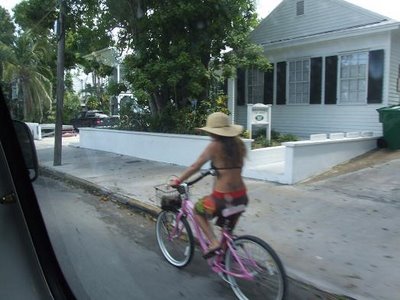
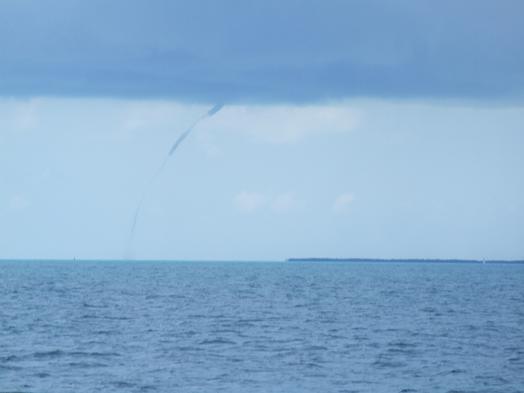













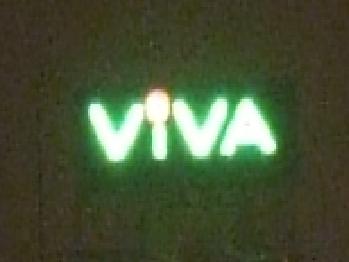
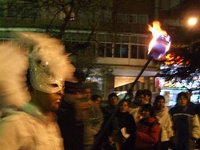


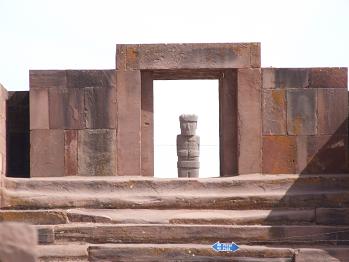
 Pictured to left, Inca burial tower near Puno, constucted around 1400 AD and partly destroyed by lightning around 1830 AD. Apparently, the lightning was attracted by around 30kg of gold artifacts found in the tower´s remains by archeologosts working in the 1960´s. The USA archeologists gave the gold to the Gold Museum in Lima, but kept the mummies for further study in the USA....
Pictured to left, Inca burial tower near Puno, constucted around 1400 AD and partly destroyed by lightning around 1830 AD. Apparently, the lightning was attracted by around 30kg of gold artifacts found in the tower´s remains by archeologosts working in the 1960´s. The USA archeologists gave the gold to the Gold Museum in Lima, but kept the mummies for further study in the USA.... 







